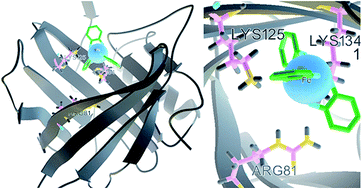The ligands of neutrophil gelatinase-associated lipocalin†
Abstract
Neutrophil gelatinase associated lipocalin (NGAL), was originally identified in neutrophil granules as a heterodimer complex with gelatinase B (matrix metalloproteinase 9, MMP9), but more recently has been found to be secreted by damaged epithelial cells. Ngal is a member of the lipocalin family and subsequently named as lipocalin 2 on the basis of structural similarity with other members of the lipocalin family and its potential association with hydrophobic retinol and cholesterol oleate more strongly than their hydrophilic counterparts. In 2002, a landmark paper suggested that Ngal is a bacteriostatic agent which blocks iron acquisition by interacting with a number of bacterial siderophores, especially enterobactin. Since then, more siderophore-carrying functions have been reported than the possibility of hydrophobic ligand transport. In this setting, Ngal was renamed siderocalin. Functions of siderocalin include not only bacteriostatic activity but potentially as a mediator of cell growth and differentiation; some of these functions appear to be referable to the holo siderocalin:siderophore:iron complex and recent work suggests that metabolic products may act as mammalian siderophores bound by Ngal. While still speculative, it may be that the mammalian siderophores can establish the missing link between Ngal and a number of its functions in vivo. This review provides an overview of the discoveries of the different ligands of Ngal and consequently related functions. Hydrophobic ligands, bacterial siderophores as well as their modified structures (synthetic siderophores), and mammalian siderophores are summarized.


 Please wait while we load your content...
Please wait while we load your content...